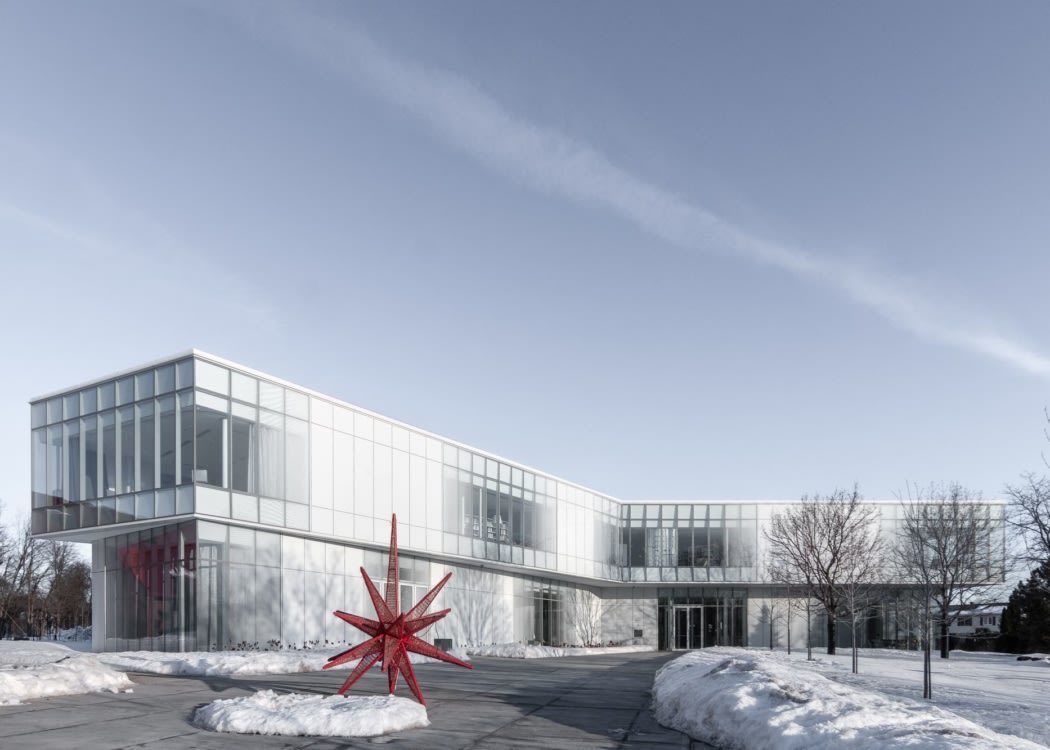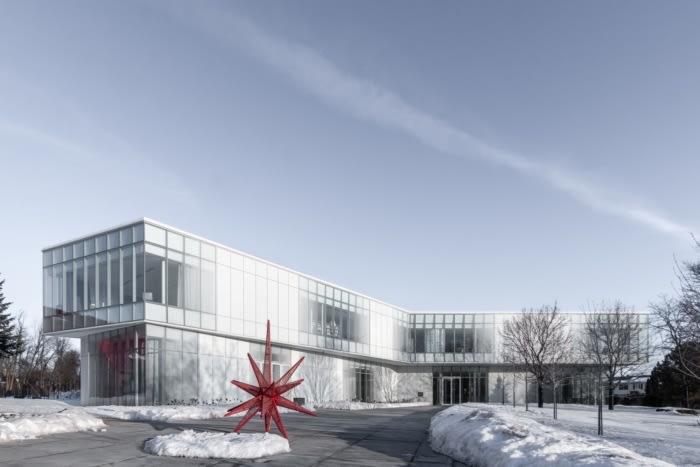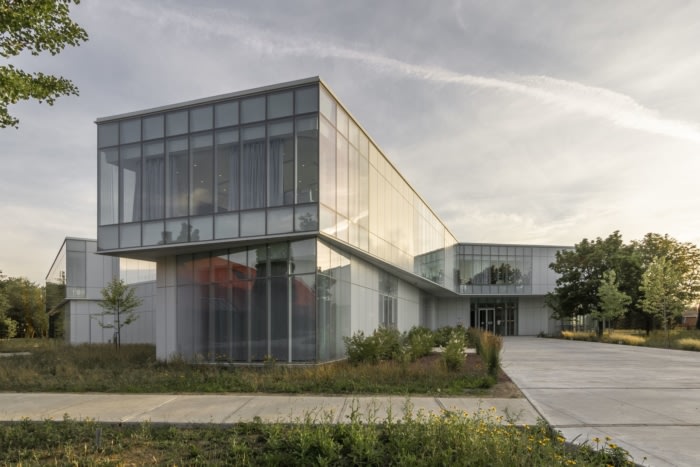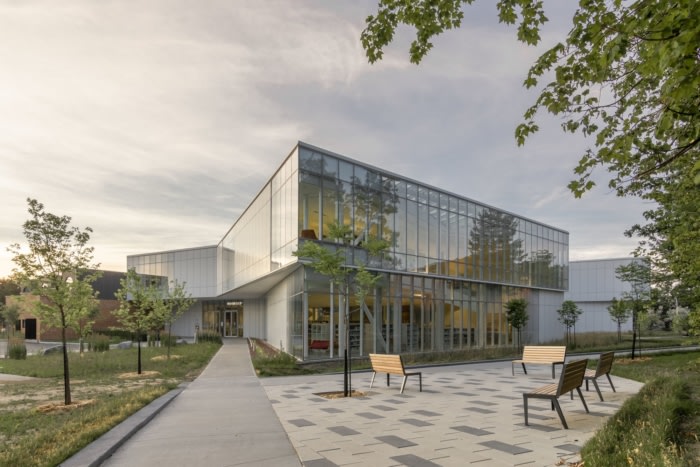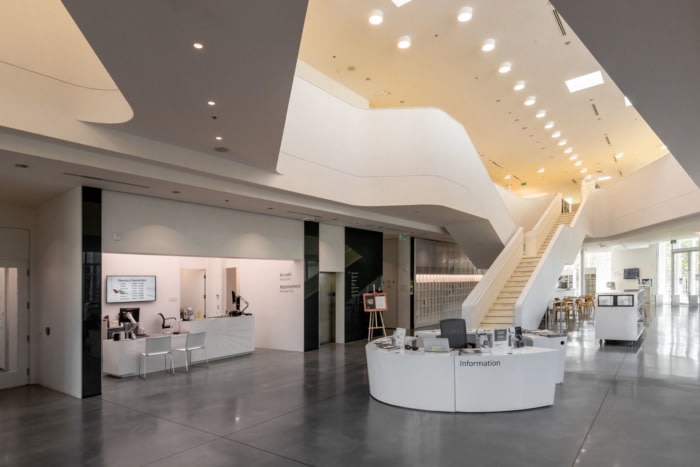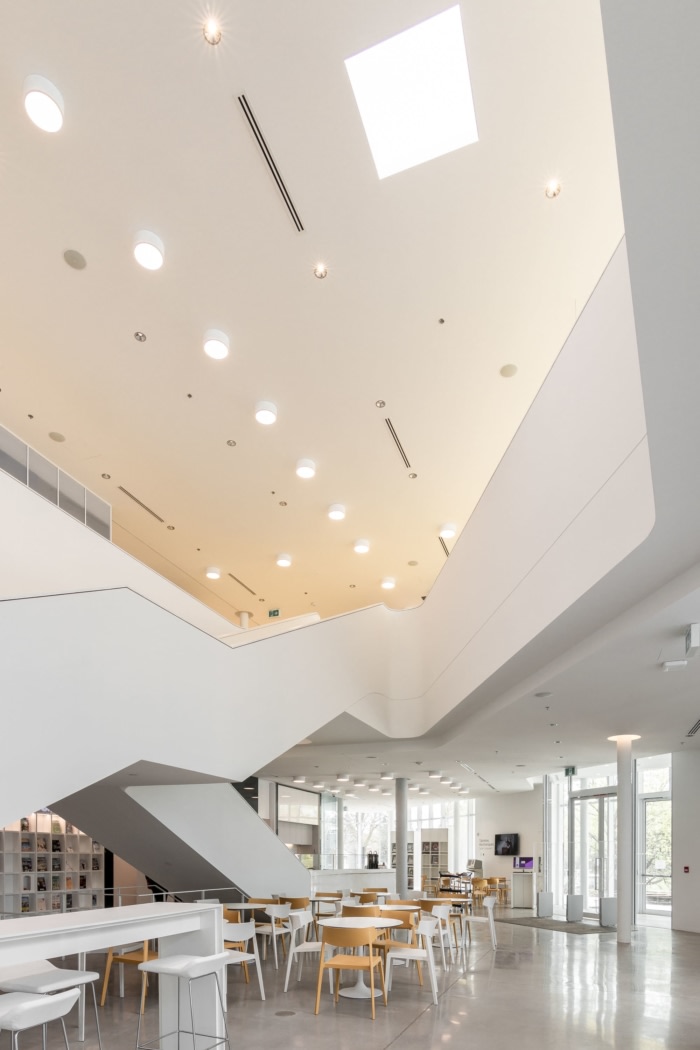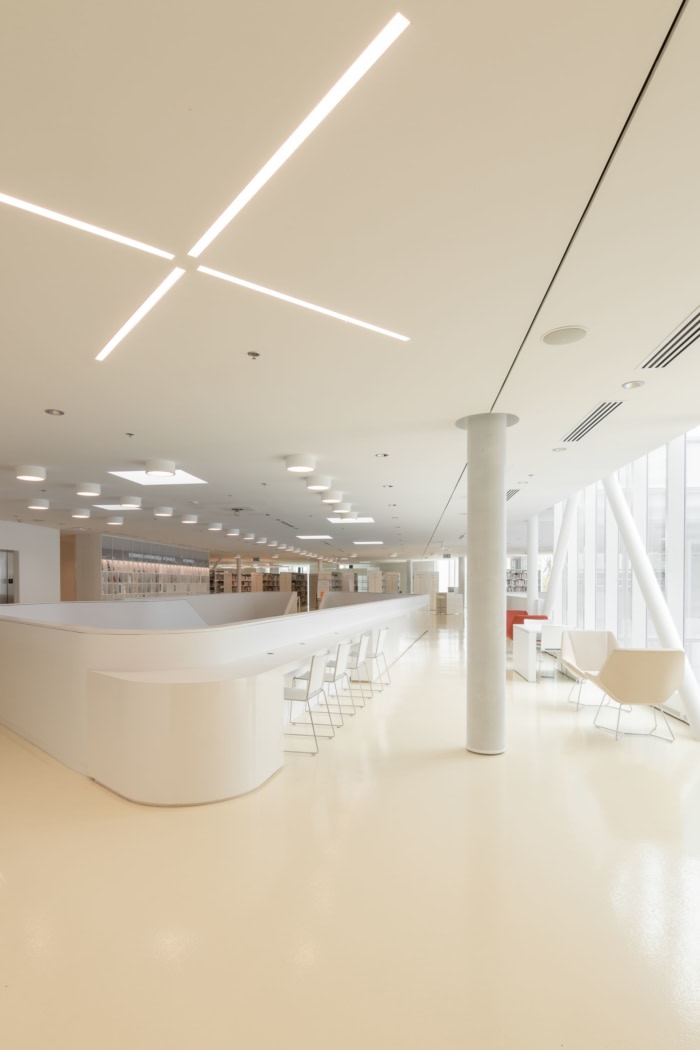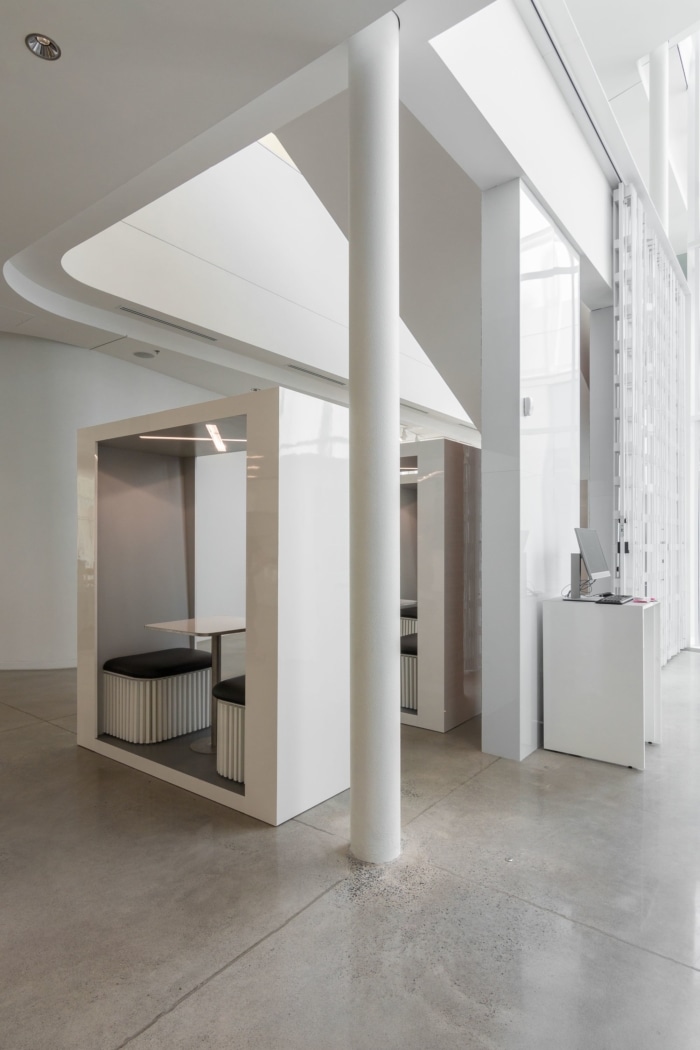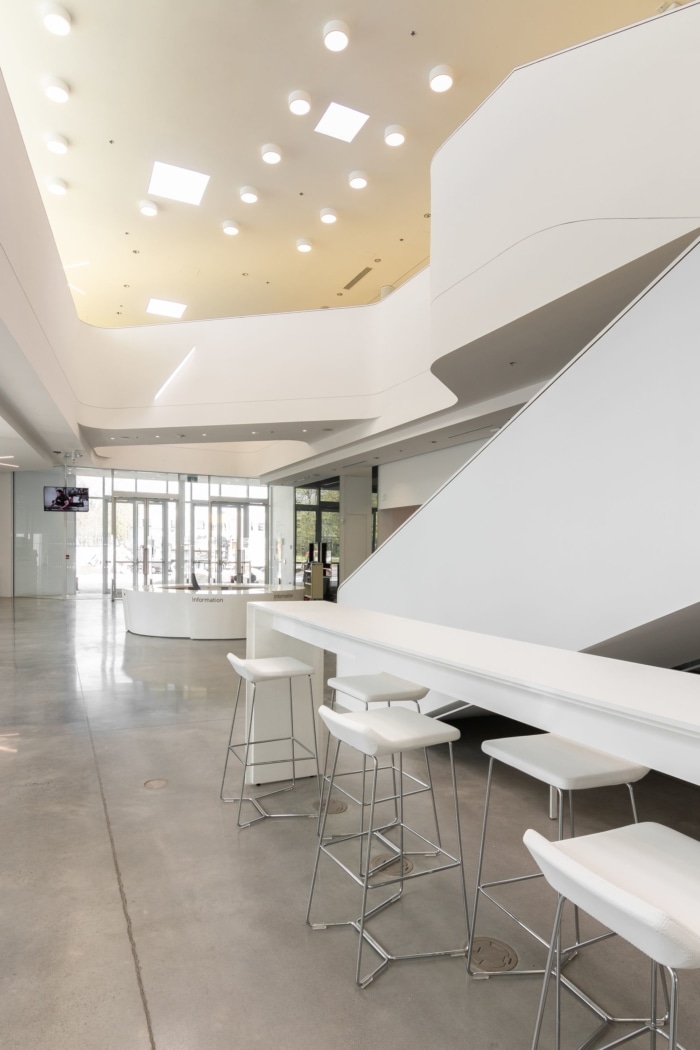Pierrefonds Public Library
Chevalier Morales and DMA architects worked together to complete the Pierrefonds Public Library as a welcoming and thoughtful environment for guests in Montreal, Canada.
Defined as the combination of a park and a shopping mall, both considered as highly attended “third place”, this innovative library embodies an ecosystemic vision where the programs and the relations between them are developed with the same level of attention. It is a true social and information exchange network that takes shape into a complex circulation structure that renews the library experience with each visit.
The design of the Pierrefonds Public Library also innovates in its relation to the landscape, its discreet technological approach actively participating in the scenography, and the collections’ display. The latter are structured around thematic poles to enhance accessibility.
The combination of an ideal park and a shopping mall
While looking through old masterplans of Pierrefonds-Roxboro, the architects came across a graphic image depicting the main planning criteria for green spaces in the district. The drawing showed an idealized park on a generic site. The park was divided into various areas, based on age groups and types of activities: green spaces, rest spaces, play zones, exchange networks, etc.; similar to library planning.An in-depth study of this document, paired with a reorganization of the various areas, especially the green spaces, became one of the foundations for the project. An interior garden emerged as a result of these explorations. Created by an extraction process, the garden allows natural light as well as part of the natural surroundings to reach the heart of the existing building. The garden also functions as reference point for users and employees of the library.
Another important characteristic of the shopping mall is its circulation network fed by multiple entryways that compels the customer into specific paths. Thus, stairways typically located in central atriums are often voluntarily reversed, as a way of extending the visitor’s stay. This typology is particularly interesting to the planning of a library. Its numerous spatial qualities are essential components of what is called a “third place”. Users circulating freely, flexibility in spatial organization, multiple movements and experiences are just a few of these advantages.
White transparency and structural lightness
The project’s forms and materials are simple and intend to disappear to highlight the presence of its landscape, users, and books. White is dominant both inside and out and offers a neutral canvas from which the landscape’s changing colors, the roaming visitors, and the many documents contrast and stand out. The white surfaces – walls, ceilings, and shelving – also reflect and multiply the natural light coming in through the vast glass curtain walls, the interior garden, the glass roof, and the multiple skylights, allowing the library to stay bright even during cloudy weather. On the upper level, the light-yellow epoxy-glazed concrete floor, oak bleachers, and colorful and comfortable furniture bring warmth to the predominantly white spaces.A glazed curtain-wall system punctuated with white aluminum sections wraps the perimeter of the building. Some glass panels are screen-printed to create a smooth transition between transparency and opacity. The envelope is also textured inside; perforated aluminum panels flank the floor and ceiling, which also act as a ventilation distribution system.
Finally, the new building spreads around the initial borough’s library. Developing the junctions between the new building envelope and the existing facade was another technical and esthetical challenge. Some salvaged bricks were used to create inside partitions recalling the outline of the previous building. Integrating the memory of the old library into the current project was fundamental.
Design: Chevalier Morales and DMA architects
Design Team: Stephan Chevalier, Sergio Morales and François Lemoine, Alexandre Massé, Julie Rondeau, Gabriel Lanthier, Céline Leclerc, Christian Aubin, Ève Beaumont-Cousineau, Catherine St-Marseille, Simon Barrette, Geneviève Riopel
Photography: courtesy of Chevalier Morales

